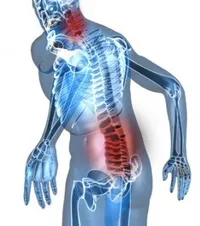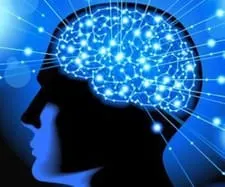- Infantile Colic
-
Chiropractic Adjustments & Brain Activity : This article suggests that after spinal Adjustments there is an improvement in brain activity, specifically the prefrontal cortex, by 20% on average. This part of the brain is responsible for many high level functions such as the processing of PAIN and the EMOTIONAL response to pain.
-
Chiropractic Adjustments Boost Anti-Oxidant Levels : This study further provides support that chiropractic adjustments can naturally boost anti-oxidants to counteract the oxidative stress involved in chronic pain.
-
Blood Tests Supports How Chiropractic Heals : The mechanical force of the chiropractic Adjustments cause the body to promote the synthesis of neuropeptides that modulate pain. This had a therapeutic effect on the nervous system and helped the body heal. Chiropractic care helps decrease pain by changing the body’s chemistry in a positive way. The best part about this study? Chiropractors often relay to patients that “we don’t heal anything, you do.” This study builds on the evidence that chiropractic helps the body heal naturally.
-
Chiropractic Reduces Herniated Disc Pain
-
Chiropractic Care Keeps Seniors Mobile and Active
-
Chiropractic Helps Athletes Jump Higher After Ankle Injury
-
Post-Concussion Patient Care; Relevance of Chiropractic Care
-
Behavioral and learning changes in a child with ADHD: a case study
Studies by leading medical journals in recent years have confirmed the benefits of chiropractic care:
- Ontario Ministry of Health concluded that chiropractic care was the most effective treatment for lower back pain. The agency also recommended that chiropractic care be fully integrated in the Canadian government's health care system.
- The Federal Agency for Health Care Policy and Research published its Clinical Practice Guidelines, which asserted that spinal manipulation was effective in reducing pain and speeding recovery among patients with acute low back symptoms without radiculopathy.
- New England Journal of Medicine study of outcomes and costs for acute low back pain found that patients treated by chiropractors were significantly more satisfied than those who saw primary care, orthopedic or managed care practitioners.
- A study from the Journal Spine echoed that study and found that patients who sought chiropractic care were more likely to feel that treatment was helpful, more likely to be satisfied with their care, and less likely to seek care from another provider for the same condition, compared to those who sought care from medical doctors.
- Center for Clinical Health Policy Research at Duke University concluded in a study that spinal manipulation resulted in almost immediate improvement for cervicogenic headaches, or those that originate in the neck, and had significantly fewer side effects and longer-lasting relief of tension-type headache than a commonly prescribed medication.
CHIROPRACTIC ADJUSTMENTS POSITIVELY CHANGE BRAIN FUNCTION
Overview: The Journal of Neural Plasticity published an article by primary investigator Dr. Heidi Haavik that the intrinsic relationship between spinal function and brain function and how adjustments have a positive effect on brain function with restoration of proper spinal function. Dr. Haavik stated, “ “WE DO KNOW THAT SPINAL FUNCTION DOES AFFECT BRAIN FUNCTION. THERE’S NOW SOLID EVIDENCE THAT ADJUSTING THE SPINE CHANGES BRAIN FUNCTION.
THIS IS THE FOURTH TIME THAT THE EFFECT OF ADJUSTING THE SPINE HAS ON THE BRAIN HAS BEEN STUDIED. THIS LAST TIME IT WAS STUDIED AND CONFIRMED BY AN INDEPENDENT MEDICAL RESEARCHER.” They concluded that a single session of spinal manipulation of dysfunctional segments in subclinical pain patients alters somatosensory processing at the cortical level, particularly within the prefrontal cortex.
Findings: This article suggests that after spinal Adjustments there is an improvement in brain activity, specifically the prefrontal cortex, by 20% on average. This part of the brain is responsible for many high level functions such as behavior, decision making, goal directed tasks, autonomic function, motor control, eye movements, spatial awareness, memory, attention, and processing of PAIN and the EMOTIONAL response to pain. Previous research has implied that chiropractic adjustments improve sensorimotor function in the brain and therefore are helpful for fall prevention. This study further builds on the evidence that having better spatial awareness and joint position sense helps the patients to better carry out their day.
Whenever a spinal joint isn’t functioning properly these joint segments are termed “ Subluxations ” in chiropractic. This article provides data suggesting that adjustments to correct spinal subluxations lead to a 20% change in brain activity in the prefrontal cortex. Chiropractors have long claimed a wide spectrum of improvements for patients under care; among those include increased ability to focus as well as improvements in movement and coordination. This study builds on us understanding how and why this could happen in patients with chiropractic care.
Bottom Line: Chiropractic adjustments have a positive effect on brain function each treatment. This builds on evidence that the nervous system is able to function more optimally after an adjustment; therefore bringing balance to the spine and body.
Click here for the original article. Dina Lelic, Imran Khan Niazi, Kelly Holt, et al., “Manipulation of Dysfunctional Spinal Joints Affects Sensorimotor Integration in the Prefrontal Cortex: A Brain Source Localization Study,” Neural Plasticity, vol. 2016, Article ID 3704964, 9 pages, 2016.
CHIROPRACTIC ADJUSTMENTS INCREASE ANTI-OXIDANT PRODUCTION
Overview: This study published in February 2015 investigated the effects of spinal adjustments on the amount of oxidative stress in pain with chronic
Neck Pain
and
Back Pain
syndromes. Spinal manipulation was done twice weekly for 5 weeks by an experienced chiropractor.

Findings: Blood samples were taken from the test subjects before and after the study period, and the researchers noted levels of three specific anti-oxidants: superoxide dismutase (SOD), catalase, and glutathione peroxidase (GPx). At the end of the study, there was a significant increase in both SOD and GPx.
Importance: Oxidative stress occurs as a result of an imbalance and pain. The body tries to counteract this through making cellular antioxidants. This study suggests that one of the Benefits of Chiropractic Care is to increase the body’s immune system through naturally boosting these antioxidants. This builds on the grounds for a correlation between spinal adjustments positively affecting someone’s oxidative-stress parameters.
Bottom Line: This study further provides support that chiropractic adjustments can naturally boost anti-oxidants to counteract the oxidative stress involved in chronic pain.
Click here for the original article. Kolberg, Carolina et al. Journal of Manipulative & Physiological Therapeutics , Volume 38 , Issue 2 , 119 - 129 More: What the Research Show
BLOOD TESTS SUPPORT HOW CHIROPRACTIC HEALS
Overview: We know Chiropractic works. Now, the literature is investigating more and more as to HOW it works. While many studies support that spinal manipulation reduces pain and improves range of motion, there is still more to be done. This study further evaluated how the adjustment changes pain modulation in the body.
Findings: This study focused on the biochemical impact that an adjustment has with decreasing pain. Blood samples of neurotensin, oxytocin, orexin A and cortisol were taken before and after treatment. It was found that immediately following treatment, there was a significant increase in neurotensin and oxytocin blood levels.
Importance: Orexin-A is a neuropeptide from the lateral hypothalamus that helps control pain. A study published in 2016 out of the European Journal of Pain concluded that, “ orexins can be useful therapeutic targets for chronic pain and treatment. ” Furthermore, oxytocin a hormone that has anti-inflammatory properties; these levels are naturally high when moms are giving birth, breastfeeding their babies, and when you kiss your loved ones.
Bottom Line: The mechanical force of the chiropractic Adjustments cause the body to promote the synthesis of neuropeptides that modulate pain. This had a therapeutic effect on the nervous system and helped the body heal. Chiropractic care helps decrease pain by changing the body’s chemistry in a positive way. The best part about this study? Chiropractors often relay to patients that “we don’t heal anything, you do.” This study builds on the evidence that chiropractic helps the body heal naturally.
Click here for the original article Gustavo Plaza-Manzano. Changes in Biochemical Markers of Pain Perception and Stress Response After Spinal Manipulation Journal of Orthopaedic & Sports Physical Therapy 2014 44:4, 231-239 Click here for the orexin-A article
CHIROPRACTIC CARE KEEPS SENIORS MOBILE AND ACTIVE Click here for the article Weigel PAM, Hockenberry JM, Wolinsky FD. "Chiropractic use in the Medicare Population: prevalence, patterns, and associations with 1-year changes in health and satisfaction with care." Journal of Manipulative and Physiological Therapeutics 2014;37:542-551.
CHIROPRACTIC CARE REDUCES DISC PAIN Click here for the article Leemann, Serafin et al. "Outcomes of Acute and Chronic Patients With Magnetic Resonance Imaging–Confirmed Symptomatic Lumbar Disc Herniations Receiving High-Velocity, Low-Amplitude, Spinal Manipulative Therapy: A Prospective Observational Cohort Study With One-Year Follow-Up" Journal of Manipulative & Physiological Therapeutics , Volume 37 , Issue 3 , 155 – 163
CHIROPRACTIC HELPS ATHLETES JUMP HIGHER AFTER ANKLE INJURY Click here for the article Hedlund S, Nilsson H, Lenz M, Sundberg T. Effect of chiropractic manipulation on vertical jump height in young female athletes with talocrural joint dysfunction: a single-blinded randomized clinical pilot trial. Journal of Manipulative and Physiological Therapeutics 2014;37(2):116-23.
BEHAVIORAL CHANGES SECONDARY TO CHIROPRACTIC CARE IN A CHILD WITH ADHD
Objective: Attention Deficit Hyperactivity Disorder (ADHD) is extremely subjective in both diagnosis and treatment. No single cause has yet been determined for this disorder nor has there been a single treatment plan that is effective in a majority of cases. This paper proposes a possible etiology for some cases of ADHD with respect to concentration and hyperactivity along with a possible positive association with chiropractic adjustments. Clinical Features: A case history is presented of an 8-year-old child with many learning and behavioral disorders that are associated with ADHD and temporally related to a fall incurred 18 months prior to being seen at this office. Physical examination revealed limited cervical ranges of motion, radiological examination noted a cervical base angle of 23 degrees, and sacro occipital technique examination had findings consistent with a sacroiliac hypermobility syndrome (category 2).
Conclusion: There are many causes to ADHD as well as other learning and behavioral disorders; therefore conclusions cannot be conclusively drawn by a single case study. A possible conclusion that can be drawn in this case is that adjusting spinal lesions (e.g., subluxations) appeared to reduce the child’s pain and discomfort, which allowed him the ability to concentrate, learn and “sit still.” Further studies with controls need to be conducted in this area to determine the effectiveness of chiropractic care in aiding the symptoms of children who are classified as ADHD.
Citation: Lovett, L. J Vert Sublux Res. 2006; (Oct:4):


